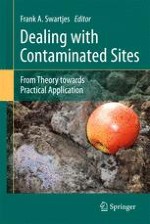2011 | OriginalPaper | Buchkapitel
5. Human Health Risk Assessment
verfasst von : Frank A. Swartjes, Christa Cornelis
Erschienen in: Dealing with Contaminated Sites
Verlag: Springer Netherlands
Aktivieren Sie unsere intelligente Suche, um passende Fachinhalte oder Patente zu finden.
Wählen Sie Textabschnitte aus um mit Künstlicher Intelligenz passenden Patente zu finden. powered by
Markieren Sie Textabschnitte, um KI-gestützt weitere passende Inhalte zu finden. powered by
